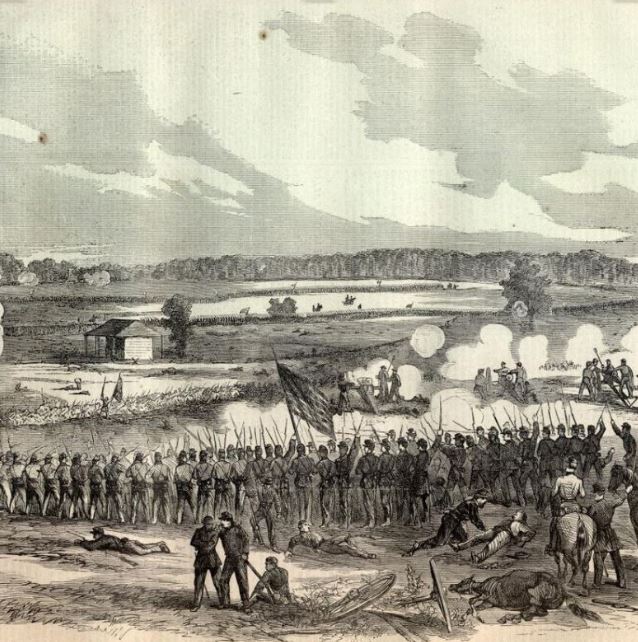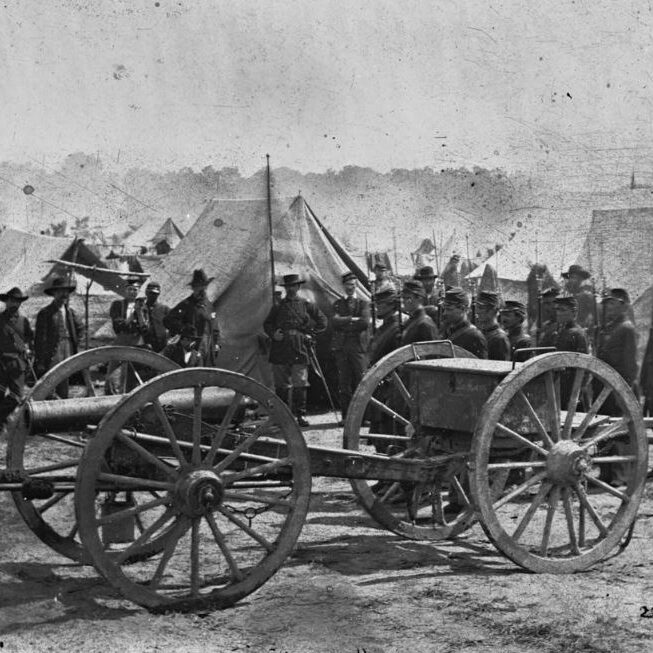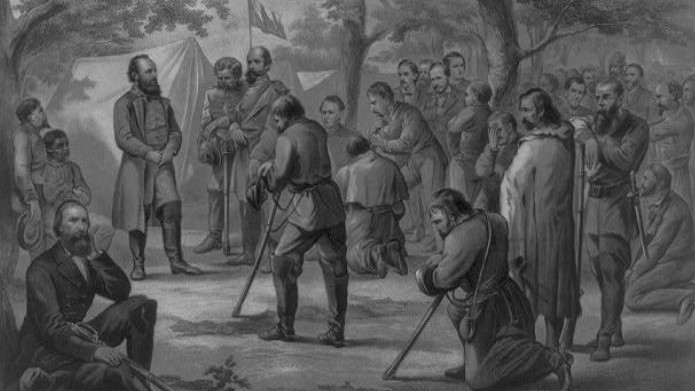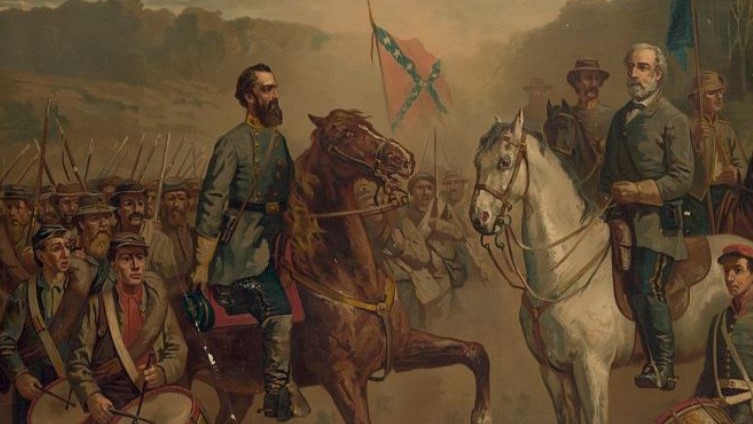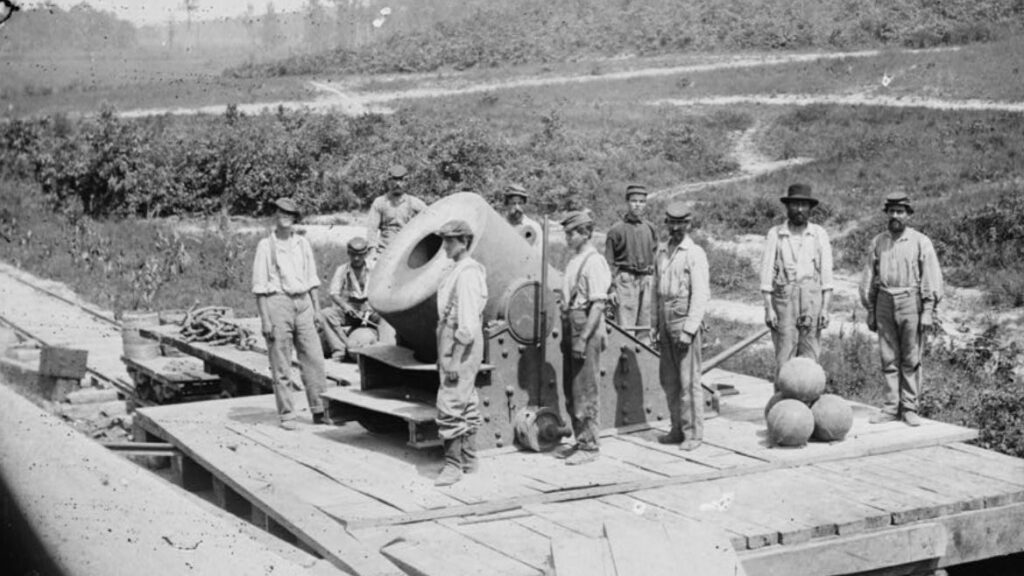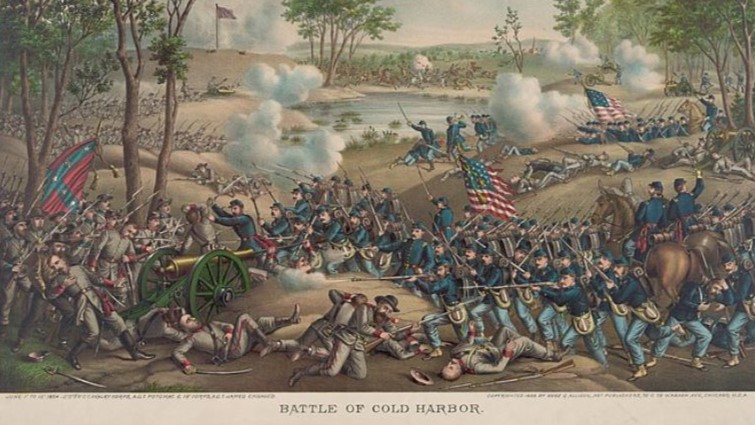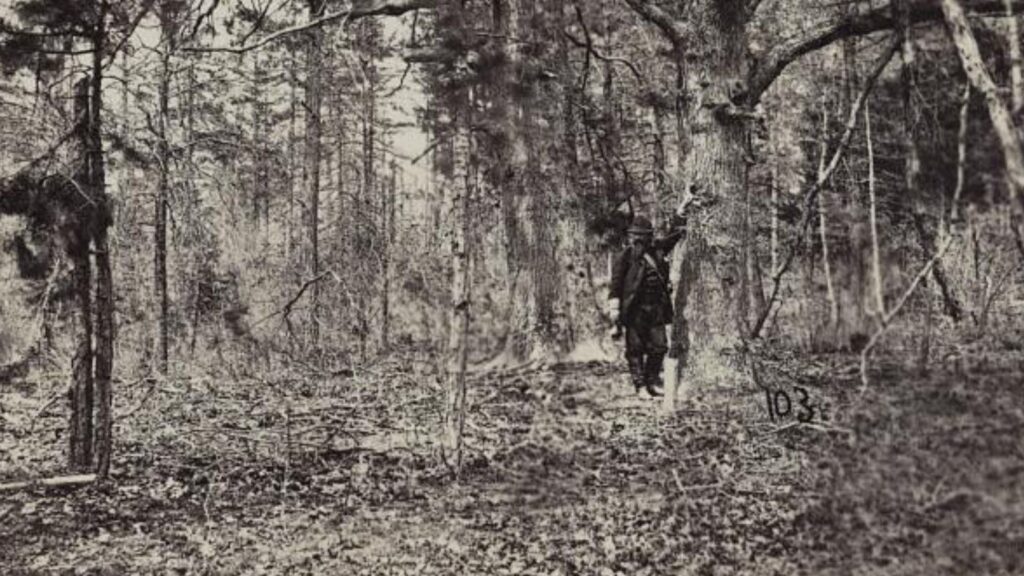As a border state, Kentucky was the site of numerous Civil War battles from 1861 to 1865.
Kentucky was a state with divided loyalties and became a battleground for both sides. While major campaigns bypassed the state, Kentucky witnessed brutal engagements that left its soil stained red.
Join us as we delve into the deadliest Civil War battles fought on Kentucky soil, exploring the strategies, the sacrifices, and the lasting impact on the war’s trajectory.
- 1. Kentucky's Role in the Civil War: An Overview
- 2. Battle of Perryville, Kentucky (October 8, 1862)
- 3. Battle of Richmond, Kentucky (August 29-30, 1862)
- 4. Battle of Munfordville, Kentucky (September 14-17, 1862)
- 5. Cynthiana Raid, Kentucky (June 11-12, 1864)
- 6. Battle of Mill Springs, Kentucky (January 19, 1862)
- 7. Battle of the Cumberland Gap, Kentucky (September 7–9, 1863)
- 8. Frequently Asked Questions: Kentucky's Battles in the Civil War
- Further Reading
1. Kentucky’s Role in the Civil War: An Overview
Kentucky played a complex and divided role in the American Civil War. Though officially declaring itself neutral at the war’s outset in 1861, Kentucky was considered a border state caught between the Union and Confederacy.
Due to its strategic location and resources, both sides sought to gain Kentucky’s support.
Many Kentuckians joined the Confederate army, while the state government backed the Union. Kentucky officially joined the Union in late 1861 after Confederate forces moved into the state.
Throughout the war, Kentucky was the site of constant skirmishes, raids, and full battles between Union and Confederate forces.
2. Battle of Perryville, Kentucky (October 8, 1862)
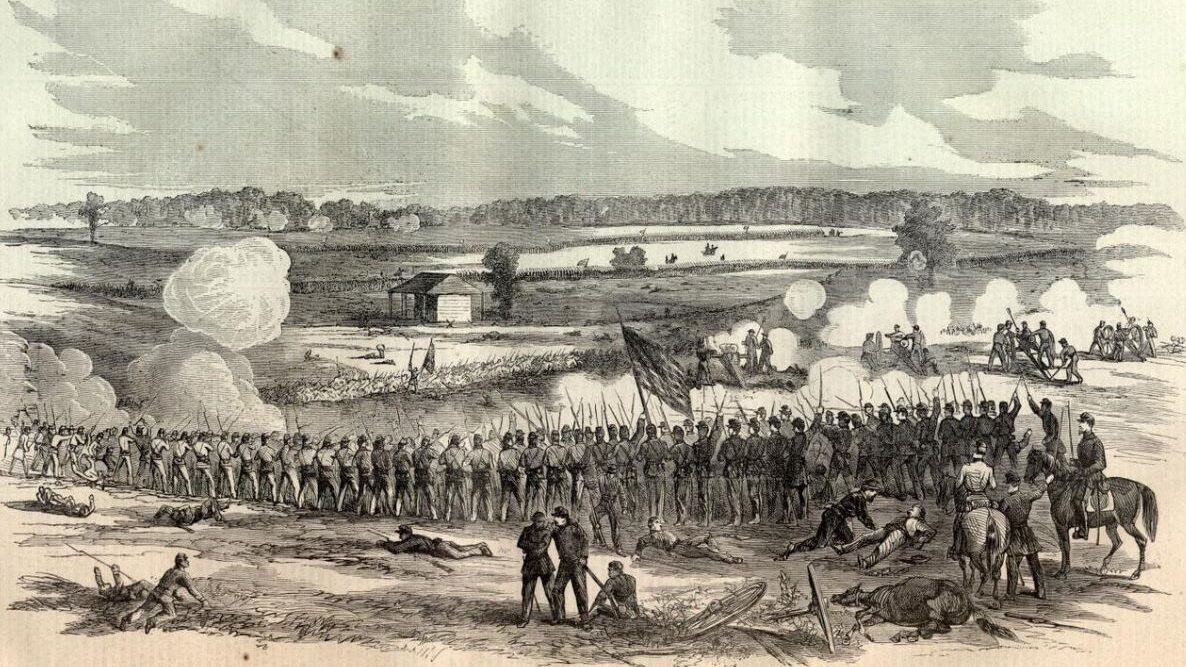
The roar of cannons echoed through the rolling hills of Kentucky on October 8th, 1862, marking the climax of the Confederate Heartland Offensive at the Battle of Perryville.
Though not as widely known as Gettysburg or Antietam, Perryville stands as a pivotal engagement in the Civil War, leaving a lasting impact on the war’s trajectory and forever etching its mark on the state’s history.
A Crossroads of Strategy
Kentucky, a crucial border state, held immense strategic value for both sides.
The Confederacy, led by General Braxton Bragg, sought to secure the state, bolster its manpower, and potentially swing its allegiance.
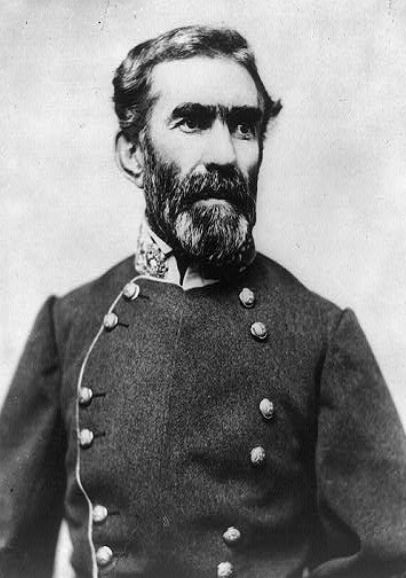
The Union, under General Don Carlos Buell, aimed to halt the Confederate advance and maintain control of Kentucky, a vital gateway to the South.
A Summary of the Battle
The Battle of Perryville unfolded in a series of chaotic maneuvers and fierce combat that tested the resolve of both sides.
Union General Don Carlos Buell’s Army of the Ohio, numbering around 55,000, converged on the small town of Perryville in three separate columns.
However he was unaware that Confederate General Braxton Bragg’s Army of Mississippi, with roughly 16,800 troops, was also approaching the area.
This unwitting convergence set the stage for a brutal clash.
Dawn of Destruction: As the first rays of sunlight pierced the Kentucky landscape, the Confederate forces stumbled upon Union troops near Peters Hill, a strategic vantage point. This unexpected encounter sparked the opening of the battle.
A Bloody Onslaught: The Confederates, eager to exploit the element of surprise, launched a ferocious attack against the Union left flank.
Led by General Benjamin “Old Reliable” Cheatham, the Confederate troops charged with unwavering determination. The Union line, though initially caught off guard, managed to muster a resolute defense, engaging in a brutal exchange of musket fire.
A Desperate Struggle: Throughout the day, the tide of battle ebbed and flowed relentlessly. Confederate forces pressed their offensive on the flanks, attempting to encircle the Union army, while Union reinforcements slowly arrived, bolstering their defensive line.
Cavalry Skirmishes and Artillery Duels: On the fringes of the main battle, mounted cavalry units clashed in lightning-fast skirmishes, adding another layer of complexity to the already chaotic situation.
Meanwhile, artillery batteries on both sides dueled relentlessly, lobbing shells that rained down on the battlefield, further intensifying the pandemonium.
Neither side could claim a decisive victory.
In the late evening, Braxton Bragg gave orders to begin a withdrawal, leaving 900 wounded men behind.
The Battle of Perryville, though inconclusive in its immediate outcome, had significant strategic consequences. It effectively ended the Confederate Heartland Offensive, forcing Bragg to withdraw from Kentucky.
A Bloody Toll
The Battle of Perryville was a brutal affair, leaving a devastating mark on both sides. Estimates suggest over 7,600 casualties, with more than 1,400 losing their lives on that day. The battlefield transformed into a scene of carnage.
The Union had 845 killed, 2,851 wounded and 515 captured or missing.
The confederates had 510 killed, 2,635 wounded and 251 captured or missing.
The Union, though battered, had achieved their primary objective – halting the Confederate advance and securing Kentucky. The battle solidified Kentucky’s place within the Union, preventing the Confederacy from gaining a crucial foothold in the border state.
3. Battle of Richmond, Kentucky (August 29-30, 1862)
The Confederacy, desperate for resources and eager to expand its influence, launched a daring offensive into the state.
This campaign, led by General Braxton Bragg and General Edmund Kirby Smith, aimed to re-establish Confederate control, disrupt Union supply lines, and potentially sway the state’s sympathies towards the south.
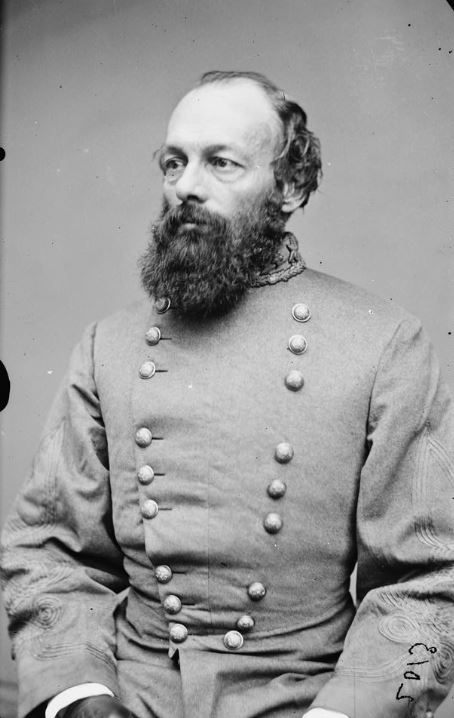
Standing in their way was the Union Army of the Ohio, determined to protect Kentucky and prevent Confederate advances.
One of the most significant clashes of this campaign unfolded near the small town of Richmond, Kentucky, on August 29th and 30th, 1862.
The Prelude to Battle: Skirmishes and Maneuvers
Leading the Confederate charge at Richmond was General Edmund Kirby Smith, a skilled commander known for his aggressive tactics.
Spearheading his advance was the cavalry under the renowned General Patrick Cleburne.
On August 29th, Cleburne’s cavalry encountered Union troops stationed near Richmond, sparking the first skirmishes of the battle. The Union forces, commanded by Brigadier General Mahlon D. Manson, responded fiercely, utilizing their artillery to inflict significant damage and force the Confederate cavalry to retreat to a defensive position.
Despite this initial setback, the Confederates remained undeterred. General Smith, recognizing the strategic importance of Richmond, planned a renewed assault for the following day.
A Decisive Day: The Tide Turns for the Confederacy
As dawn broke on August 30th, tension hung heavy in the air. Both sides prepared for the inevitable clash, knowing that this day would likely decide the fate of Richmond.
General Manson was determined to hold his ground. He initially managed to repel the Confederate advance. However, the tide began to turn with the arrival of Confederate reinforcements under General Thomas J. Churchill.
Churchill’s fresh troops utilized a hidden ravine. This allowed them to outflank the Union right flank, a tactical maneuver that proved important.
Faced with a collapsing flank and mounting pressure, the Union line faltered and ultimately broke. Retreating into Rogersville in a desperate attempt to regroup, the Union forces made a final stand. However, the momentum was firmly with the Confederates, and the Union defense crumbled.
A Costly Victory: The Aftermath of Richmond
The Battle of Richmond concluded with a resounding Confederate victory.
The Union suffered severe casualties, with over 5,300 soldiers either killed, wounded, captured, or missing.
In stark contrast, the Confederate losses amounted to a mere 451 casualties.
This was an important victory for the Confederacy as opened up the path north towards Lexington and Frankfort.
4. Battle of Munfordville, Kentucky (September 14-17, 1862)
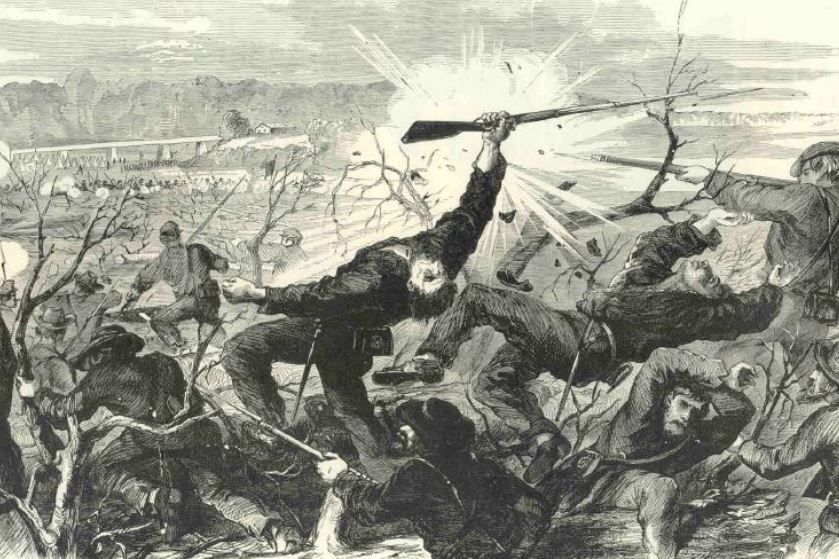
While the Battle of Richmond stands out for its lopsided casualties, the Battle of Munfordville, fought in Kentucky from September 14-17, 1862, holds significance for its strategic implications and missed opportunities. While the Confederates emerged victorious, the battle ultimately proved to be a costly detour in their campaign.
A Strategic Town and a Misguided Attack
Confederate General Braxton Bragg, leading an offensive into Kentucky, targeted Munfordville, a strategically crucial town.
Located on the Louisville & Nashville Railroad, Munfordville housed a vital bridge over the Green River, a key artery for Union supply lines. Anticipating the attack, Union Colonel John T. Wilder had fortified the town with extensive defenses.
The battle commenced with an unauthorized and ill-fated attack by Confederate Brigadier General James R. Chalmers.
Misinformed about the Union’s strength, Chalmers launched a frontal assault that met fierce resistance. His brigade suffered heavy casualties before retreating, highlighting the importance of accurate intelligence and well-planned maneuvers.
A Pyrrhic Victory and Missed Opportunities
Angered by Chalmers’ blunder but determined to capture Munfordville, Bragg arrived with his main force. Faced with overwhelming odds and the approach of Union reinforcements, Wilder agreed to surrender.
The Confederates secured a tactical victory, capturing over 4,000 Union soldiers and supplies. By contrast they lost around 700 of their own soldiers.
However, the strategic benefits were minimal.
The delay caused by the battle allowed Union forces under Don Carlos Buell to regroup and challenge Bragg’s advance.
The Confederates ultimately abandoned Kentucky shortly after, highlighting the potential consequences of strategic miscalculations.
The Battle of Munfordville serves as a reminder that victory is not always measured in body count. While the Confederates won the engagement, their focus on Munfordville came at the expense of their larger strategic goals in Kentucky.
Bragg’s lack of a clear vision and impulsive actions by his subordinates ultimately led to a pyrrhic victory – a win that came at too high a cost.
5. Cynthiana Raid, Kentucky (June 11-12, 1864)
The Second Battle of Cynthiana, fought in Harrison County, Kentucky, on June 11-12, 1864, marked a turning point in the Civil War’s Kentucky Theater.
This battle, a Union victory, ended Confederate General John H. Morgan’s “Last Kentucky Raid” and showcased the growing strength of the Union Army.
Divided Forces and a Burning Town
Dawn of June 11th: Confederate General John H. Morgan, leading 1,200 cavalrymen, approached Cynthiana, defended by a small Union force of around 300 men under Colonel Conrad Garis.
Morgan’s divided forces launched a surprise attack, driving Union troops back towards the railroad depot and the Rankin House, a fortified Union position.
Lacking artillery to dislodge the Union, the Confederates resorted to a controversial tactic: setting fire to the town. This act, while strategically questionable, destroyed numerous buildings and caused some Union casualties.
Reinforcements Arrive and the Tide Turns
Meanwhile, another Union force of 500 infantry and cavalry under Brigadier General Edward Hobson arrived by train north of Cynthiana. This contingent engaged portions of Morgan’s force in a six-hour fight at Keller’s Bridge.
However, this engagement, known as the Battle of Keller’s Bridge and considered Morgan’s last victory, proved to be a Pyrrhic victory. Despite capturing the 171st Ohio Infantry, Morgan faced dwindling resources and a growing Union presence.
A Decisive Union Victory and a Turning Point
With dwindling ammunition and facing a larger Union force of 2,400 men under Brigadier General Stephen G. Burbridge, Morgan made a tactical error by choosing to stay and fight.
On June 12th, Burbridge’s forces launched a decisive attack, driving the Confederates back into Cynthiana, where many were captured or killed.
But sides lost around 1,000 men, but this loss was more devastating for the Confederates.
The Second Battle of Cynthiana demonstrated a crucial shift in the war’s trajectory. Union mobility and growing numbers began to hinder the effectiveness of Confederate cavalry raids. This battle marked the end of Morgan’s Kentucky campaign and served as a turning point for Union control in the state.
6. Battle of Mill Springs, Kentucky (January 19, 1862)
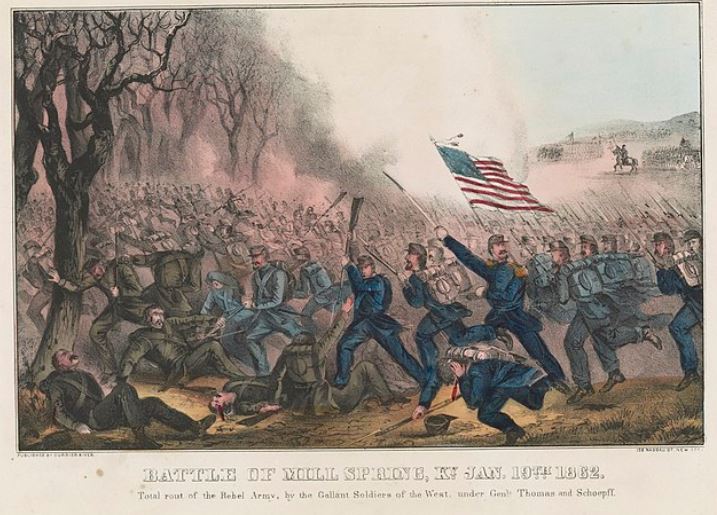
The Battle of Mill Springs, fought on January 19th, 1862, holds immense significance for its strategic impact. This Union victory shattered Confederate dominance in eastern Kentucky.
Confederate Miscalculations
Confederate General Felix Zollicoffer, disregarding orders to position his camp south of the Cumberland River, stationed his troops at Mill Springs, a seemingly defensible location.
However, this decision proved costly.
Union General George H. Thomas, aiming to disrupt Confederate operations in Kentucky, positioned his forces nearby.
A Foggy Dawn and a Costly Mistake
A poorly planned pre-dawn attack by Confederate General George B. Crittenden aimed to surprise the Union camp.
However, hampered by rain and mud, the element of surprise was lost. The ensuing battle became chaotic due to thick fog.
Tragically, Confederate General Zollicoffer, mistaken for a Union soldier due to his white coat, was fatally shot. This, coupled with strong Union resistance, caused the Confederate center to falter.
Reversal of Fortune and a Strategic Shift
The arrival of Union reinforcements and a flanking maneuver by the 9th Ohio regiment tipped the scales decisively in favor of the Union. The Confederates were routed, abandoning vital supplies and equipment in their retreat across the Cumberland River.
Casualties and Aftermath
The Union had 39 men killed and 207 wounded. The Confederates lost 125 men with 404 wounded or missing.
The Battle of Mill Springs, along with the Battle of Middle Creek, shattered the Confederate defensive line in eastern Kentucky. This victory opened the door for their push into Middle Tennessee.
General Crittenden, accused of strategic blunders and drunkenness, was relieved of command. His army was disbanded, symbolizing the fracturing of Confederate control in the region.
7. Battle of the Cumberland Gap, Kentucky (September 7–9, 1863)
While not a battle known for its bloodshed, the fall of the Cumberland Gap on September 7-9, 1863, holds historical significance for the Union Army’s control of Kentucky and Tennessee during the Civil War. It resulted in the significant capture of over 2,300 Confederate soldiers.
Strategic Bypass and Confederate Miscalculations
Union General Ambrose Burnside, aiming to capture Knoxville, Tennessee, opted for a strategic bypass of the heavily-defended Cumberland Gap, a crucial mountain pass.
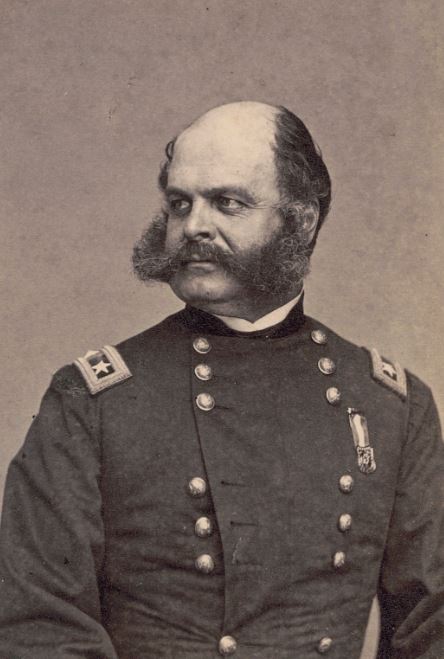
He detached a smaller force under Colonel John F. DeCourcy to distract the Confederate garrison of 2,300 men led by Brigadier General John W. Frazer.
Meanwhile, Burnside’s main force took a longer, 40-mile detour around the Gap.
Confederate General Frazer, despite lacking combat experience, held firm to his orders to defend the Gap at all costs. This proved a crucial misstep, as General Simon B. Buckner, who issued the orders, had been redeployed, leaving Frazer without a contingency plan for retreat.
A Show of Force and a Surrender
DeCourcy’s initial threat from the north wasn’t enough to dislodge the Confederates.
When a second Union brigade under Brigadier General James M. Shackelford approached from the south, Frazer still refused to surrender.
The following days saw skirmishes and the capture of a crucial Confederate water source by Union forces.
General Burnside himself arrived with reinforcements on September 8th, further tightening the noose around the Gap.
Following news of Union victories at Vicksburg and Gettysburg, and the overwhelming Union force, General Frazer finally agreed to an unconditional surrender on September 9th.
The Aftermath
While around 300 Confederates managed to escape, the Union captured over 2,300 soldiers, 14 artillery pieces, and secured control of the strategic Cumberland Gap.
This bloodless victory remained unchallenged for the rest of the war, solidifying the Union’s hold on this part of Kentucky and Tennessee.
This event showcases the role of strategic maneuvering, the consequences of miscalculations, and the impact of wider war events on local battles, even those settled without significant bloodshed.
8. Frequently Asked Questions: Kentucky’s Battles in the Civil War
What was the bloodiest Civil War battle in Kentucky?
There isn’t a definitive answer as casualty counts vary, but contenders include:
- Perryville (October 8, 1862): Around 7,600 casualties (combined)
- Battle of Richmond (August 30, 1862): Union forces suffered heavy losses with estimates around 5,300 casualties compared to the Confederate’s 450.
What was the turning point battle for the Union in Kentucky?
The Battle of Mill Springs (January 19, 1862) is often considered a turning point. This Union victory weakened Confederate control in eastern Kentucky and opened the door for further Union advances.
What role did Kentucky play in the Civil War?
Kentucky declared neutrality, but both sides disregarded it. The state’s strategic location made it a battleground, with numerous skirmishes and raids throughout the war.
What was the significance of the Battle of Cynthiana (June 11-12, 1864)?
This Union victory marked the end of Confederate General John H. Morgan’s “Last Kentucky Raid” and demonstrated the growing strength of the Union Army in the state.
What was the Cumberland Gap’s role in the Civil War?
The Cumberland Gap was a crucial mountain pass. The bloodless fall of the Cumberland Gap (September 7-9, 1863) secured Union control of this strategic location and aided their hold on Tennessee.
Further Reading
If you enjoyed this article, you may be interested to read more about the American Civil War events, or perhaps read about the bloodiest battles of the Civil War or the more about Kentucky in the Civil War. Read here for more general American history.

